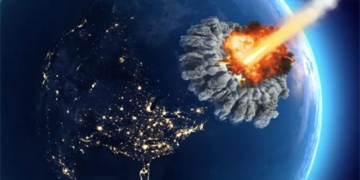These “phantom particles” are actually “auroral particles,” a special type of aurora that has never been known before.
When energy streams from the Sun interact with the Earth’s blue “armor” layers – the magnetosphere – auroras can appear – (Photo: ESA/ATG medialab)
According to the European Space Agency (ESA), these particles appear in scattered groups across the sky. Auroral particles have been recorded simultaneously by 13 spacecraft equipped with telescopes, including the Cluster mission from ESA.
The spacecraft are assigned specific tasks in the research. While some observe the vortices at the edge of the Earth’s magnetosphere, others track the streams of charged particles flowing toward Earth.
The chains of phantom particles appear on the side of Earth facing away from the Sun, as they, like regular auroras, are formed when electrical storms or charged particles emitted by the Sun collide with the Earth’s magnetosphere.
One of the well-analyzed observation events, on November 6, 2018, showed that the vortices at the edge of the Earth’s magnetosphere allowed some charged particles from the Sun to escape, finding their way to the Earth’s surface, forming auroral particles.
The vortices at the magnetosphere’s edge operate like water whirlpools, creating a quick pathway for charged particles to flow in a spiral, resulting in a stunning phenomenon.
Dr. Philippe Escoubet, a scientist from ESA’s Cluster project, commented: “This discovery shows that Cluster is part of a ‘magnetospheric orchestra’ that can collectively make additional scientific discoveries that could not be achieved with individual missions.”


















































